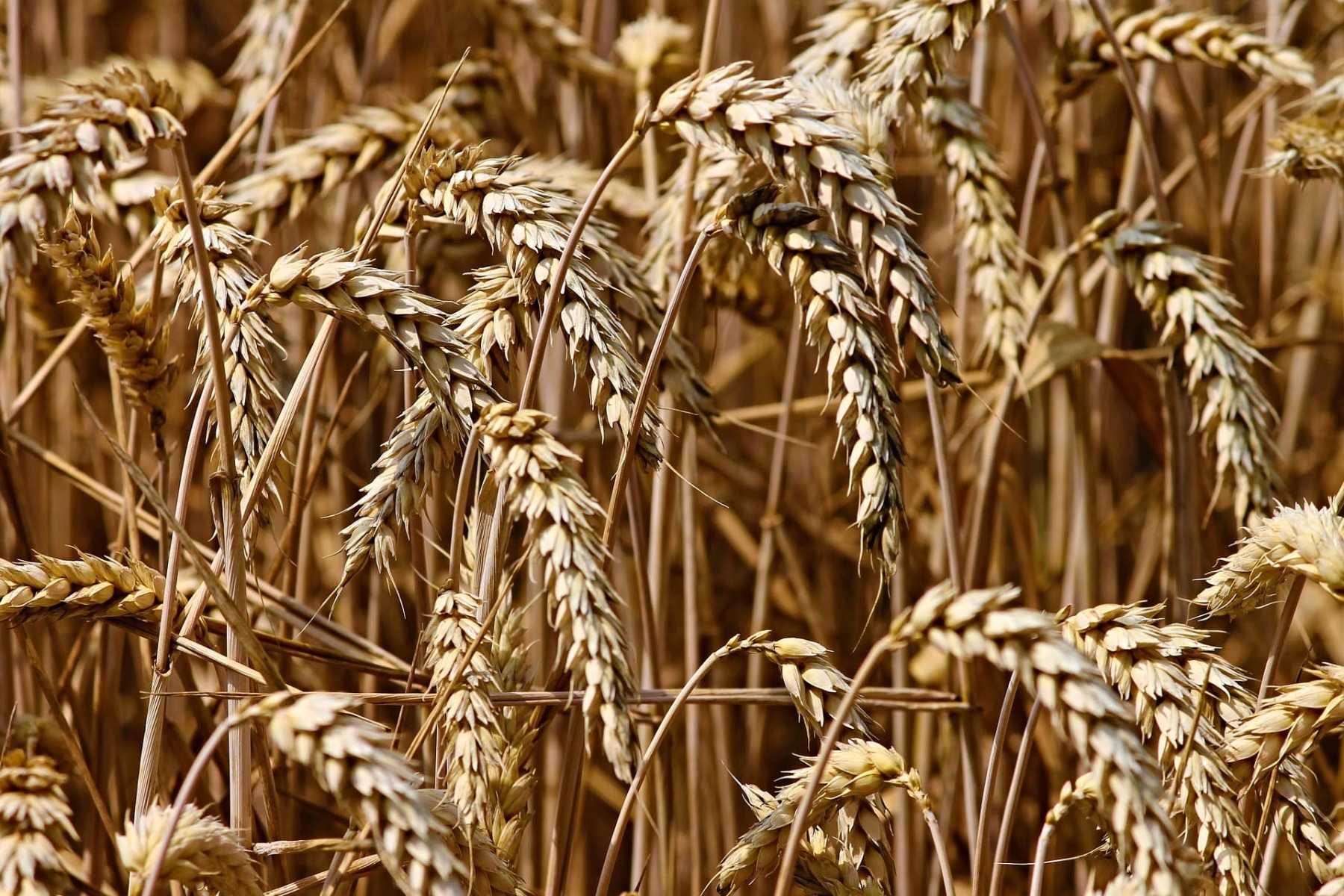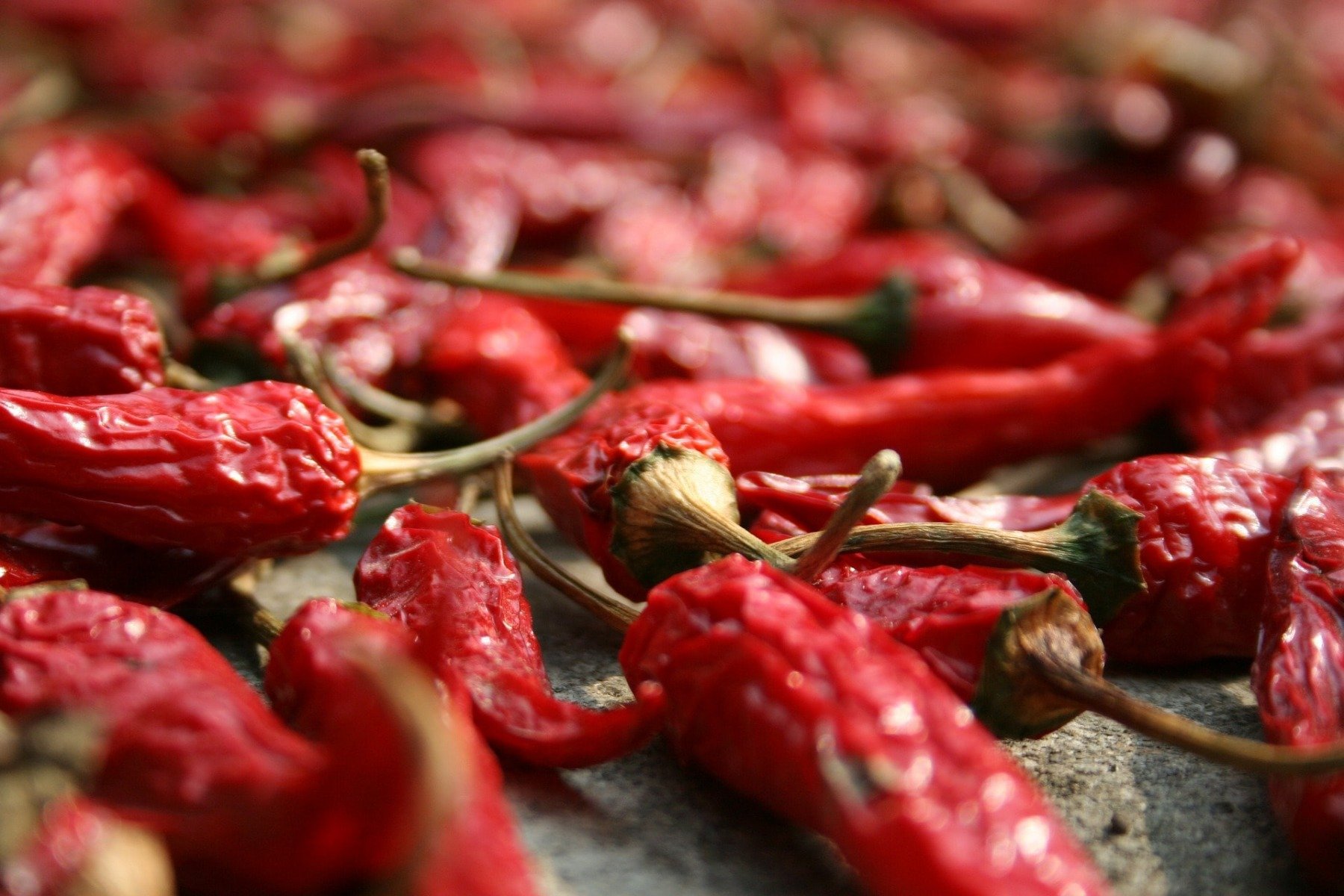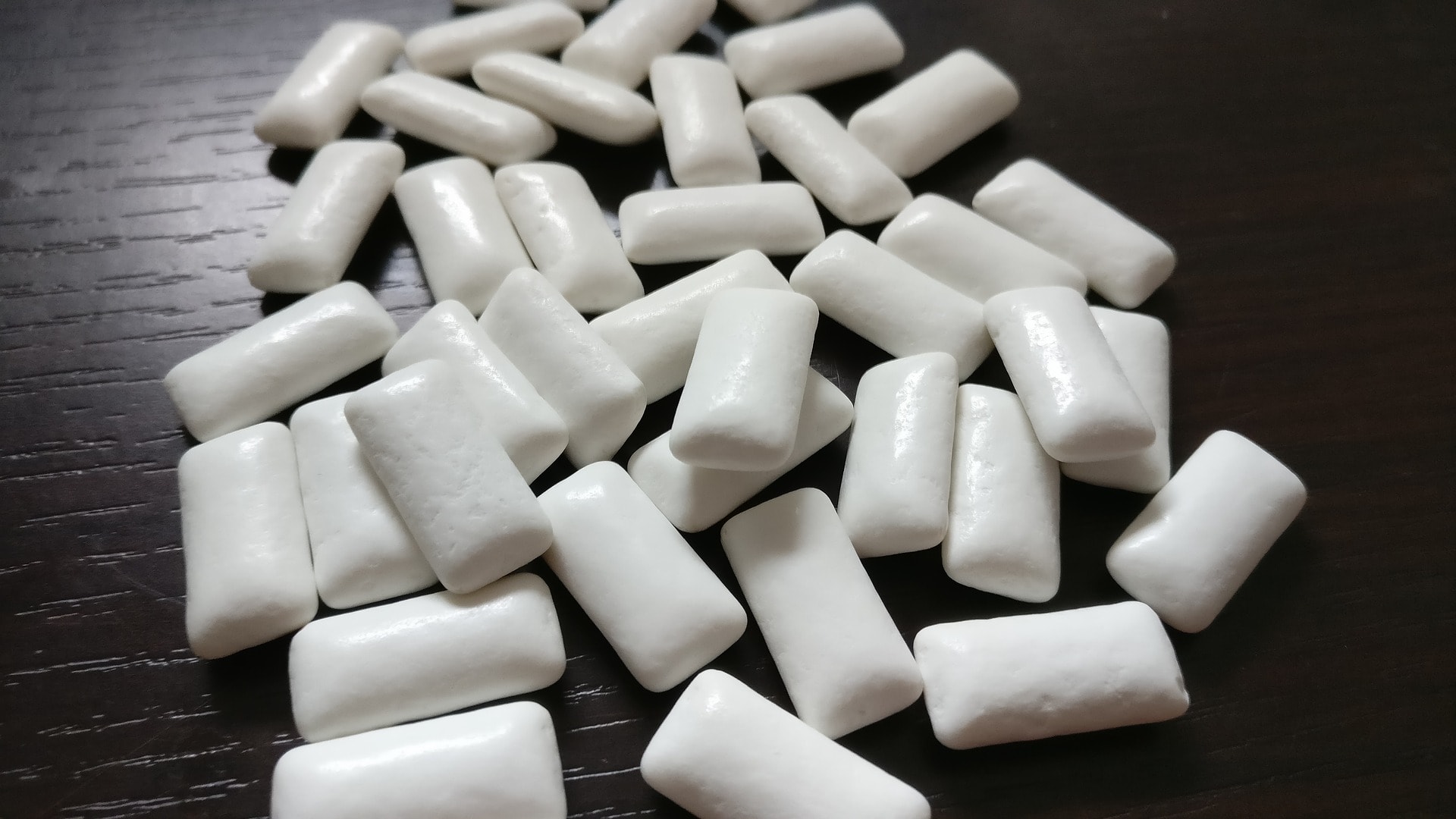Table of Contents
A sedentary lifestyle combined with a caloric meal is one of the common reasons for weight gain. Maybe that’s why new and new “improvers” are constantly appearing on our journey to the dream shape. However, not all tips are effective or even beneficial to health, so it is best to trust especially those who have been noticed by the scientists and subjected to their analysis. Learn the importance of chilli, fiber, thermogenesis activity without exercise or chewing gum on your journey to the shape you desire.
6 scientifically proven ways to lose weight successfully II.
Fiber
For many people, the challenge of increased fiber intake may sound like annoying clichés. The benefits of consuming fiber are no longer a secret, as fiber is well known, especially as a “food” for bacteria in the human microflora. However, we were interested in whether fiber is also beneficial for weight reduction, and whether scientists have also checked this possibility.
Fiber is generally recommended for a healthy lifestyle and weight loss. There are studies about the importance of fiber in regulating body weight and increasing satiety. Although it does not seem like this, fiber is one of the carbohydrates, but after consuming fiber, your blood sugar level will not rise. This is due to the fact that fiber is not easily digestible for humans. You can find it in cereals, legumes or fruits and vegetables. In fact, every vegetable and fruit contains fiber, especially in the skin, membranes and seeds. If you eat fruits, cereals and cereal foods, you will not avoid fiber, and that is good because it supports your health. [1] [2]

According to the study in 2005, adult Americans eat less than half of the recommended amount of fiber. Moreover, they add that its presence in the diet is also low in people who follow various low-carb diets, such as the Atins or South Beach diet. We only need to mention that the South Beach diet is not completely low-carbohydrate, although its principle is low carbohydrate content and a high proportion of healthy fats and proteins. There is also a “ketogenic” version of the South Beach diet, which aims to use energy from fats. The presence of fiber in a weight loss diet should be considered a tool for success, according to scientists. Increased fiber intake is also important for stopping obesity in people in developed countries.[3] [4]
Researchers at the University of Massachusetts Medical School compared the effectiveness of diets in 240 participants with the metabolic syndrome. It was a comparison of 2 diets – the diet of the American Heart Association (AHA), which is used for the purpose of preventing heart disease. The second was much simpler, the requirement was to consume 30 or more grams of fiber per day. The average fiber intake in both groups was 19 g. Participants in both groups lost weight, blood pressure, and improved insulin sensitivity, but also maintained weight loss for 12 months. There was a difference in the measurement of weight loss, the group with the AHA diet lost approximately 26,76 kg, while the group with fiber only 20,8 kg. The results show the success of the AHA diet, but at the same time it shows that even only increasing fiber consumption helps to improve your health. [5]
Do you want to know more about fiber and its benefits? Read our article – Fiber in food – How much to eat and what benefits does it offer?
You might be interested in these products:
Non-exercise activity thermogenesis
According to its name, non-exercise may be an unknown concept, but this activity is probably performed by almost everyone, even on a daily basis. It comes from a translation of the English abbreviation NEAT (Non-exercise activity thermogenesis) and represents the daily number of calories you burn by activities other than sports, food consumption and sleep. [12]
The NEAT category of activities includes, for example, cooking, shopping, walking or walking the dog. For some of us, the scale of these activities may be negligible, but these activities can also have an important effect on metabolic rate and caloric expenditure.[6]
For example, are you tired of vacuuming or walking your dog? We will try to motivate you with a table listing calories that a 68 kg person can burn in 1 hour. [7] [8]
A sedentary lifestyle combined with passivity can lead to health problems. Even a little physical activity can help, even nervous body movements (fidgeting). This is probably the best translation of the activity we all do at times, the typical nervous movements of the hands and feet while sitting. The results of a study from 2016 are associated with restless movements. The research was conducted for 12 years on more than 12 000 women, and according to the results, restless movements can reduce the risk of death associated with an excessive sedentary lifestyle. [6]
This is certainly not to say that nervously tapping your finger on the table at work has a major impact on your daily energy expenditure. You can support calorie burning, for example, by walking up the stairs instead of the elevator on the way home. Try to think about it as you approach the escalator in the mall and notice the stairs.
Capsaicin – a component of chili peppers
Do you like chili peppers, habanero, hot peppers or other “fiery” varieties of peppers? In addition, you support your metabolism by consuming spicy food. This is due to an ingredient called capsaicin, which improves metabolic activity and slightly reduces appetite.[1]
Capsaicin is a component of chili peppers and was first isolated in 1878. After a short time, capsaicin has been found to stimulate nerve endings on the skin, increase gastric acid secretion and cause burning on the human mucosa. Over time, capsaicin-like substances have also been isolated and they have been given the resulting name – capsaicinoids. [9]

Capsaicin has several benefits for the human body, one of them is its anti-obesity effect. This potential effect of capsaicin on the human body is evidenced by 4 potential mechanisms [10]:
- It reduces adipogenesis and suppresses the accumulation of fat in the body
- Affects the hypothalamus in the brain – increases satiety, reduces appetite and sensitivity to leptin
- Increases the activity of brown adipose tissue
- It changes its function in the gastrointestinal tract and intestinal microbiome
Simply put, it reduces fat accumulation, increases satiety and thermogenesis, but also regulates intestinal hormones and the microbiome. There are several studies that point to the weight reduction effects of capsaicin. The results of research from 2012 declare increased energy expenditure associated with the consumption of capsaicinoids. The amount found represents an increase of 50 calories per day. Does it seem a small amount to you? It is not a demanding physical activity or a significant change in the diet. According to scientists, this increase may bring clinical significance in 1 to 2 years. According to a 2014 study, 2 mg of capsaicinoids before a meal can reduce energy intake during consumption by 74 calories. If you already regularly improve your food with spicy peppers, you are unknowingly supporting the further healthy functioning of the body. Each of us usually spices to taste, and it is right, as high doses can be a risk. Capsaicin in high doses can have a negative effect on the body, for example, increase the risk of stomach cancer. [10] [11]
Soup
What do you imagine first when imagining a healthy lunch? You may think of a salad with chicken or something similar. If you also cut the soup out on the journey to a better shape, you would unknowingly lose its benefits.
By consuming soup, you can reduce your calorie intake by up to 20%. This is evidenced by the results of a study from 2007, which examined the effect of low-calorie soups on satiety and food intake. The soups in the research consisted of chicken broth, potatoes, broccoli, carrots, cauliflower and butter. During the study, it was also verified whether the saturation of the food was also affected by the form of the soup, such as soup in the form of puree or a separate broth from the vegetables. However, this “hypothesis” has not been confirmed and low-calorie soups will satiate you regardless of its form, according to the results. Did we convince you to change the view on the soup before the main course of lunch? Be sure to try it to see if you also feel a longer satiety, which will reduce your food intake. However, you have to be careful about one important thing, try to look for “non-cream” broth-based soups with a content of 100 – 150 calories per serving. We believe that we inspired you and gave you a tip for tomorrow’s lunch. Bon appetite! [13] [14]

Cell phone and weight loss
Do you think that weight loss mainly affects a person’s diet and exercise? Other factors and activities, such as a cell phone, can also indirectly contribute to weight gain. Don’t worry, you don’t gain weight directly by “scrolling” your social networks. The researchers found that people who look at the phone while eating food increase their calorie intake by up to 15%. Are you one of those people who likes to read something on their mobile phone or watch a video while having lunch? If you want to keep your shape, try to set the cell phone aside and try it without it. [13]
Checking the instagram at lunch is not the only negative impact of your cell phone. In 2019, research was conducted on university students in Colombia. Students with a tendency to use a mobile phone for 5 or more hours a day had a 43% higher risk of obesity. In addition, they were found to be more likely to have unhealthy habits, such as the absence of sports or the consumption of fast food and sugary drinks. A mobile phone is a versatile helper and source of entertainment, but its excessive use associated with other activities has the exact opposite effect. Try to eliminate it, for example, during normal walking or in a gym on a treadmill. Are you used to check your emails or social networks on the way to work at the same time? The attention paid to the mobile phone slows down the pace of walking, which of course also affects the calories burned while walking, and we are not talking even about inattention when crossing the road. The same is true in a treadmill gym, cardio can be boring for someone, but distractions on the phone can affect the effectiveness of training. We do not mean that the phone should remain in the locker during training, but instead of writing to a friend, try to focus mainly on movement during training and use the phone, for example, to listen to music. [15]

Chewing gum
Chewing gum is usually one of the most important parts of many people’s handbags and pockets of trousers or coats. The process of chewing gum is similar to consuming food, except that we do not swallow the chewing gum in the end. Chewing gum is a popular breath freshener, but can it also help with weight loss? Some scientific studies point to the benefit of chewing gum in reducing the feeling of hunger between courses during the day or the need to reach for sweet or salty snacks. [13]
You have surely heard the recommendation not to chew gum, because you will be rather hungry from it. This general belief is linked to the process that is triggered when chewing gum. During chewing, the production of stomach acids is stimulated. When you swallow your saliva, your stomach thinks that food is coming down and you are becoming hungry. It all makes sense, but the question is – Do you feel more hungry when chewing gum? Or else – Have the researchers verified this process? [16]

The hormone ghrelin is behind the feeling of hunger and its increase in the bloodstream causes the feeling of hunger in the stomach. But what happens when you start chewing gum instead of eating? Several studies have looked at the effect of chewing gum on hunger and human appetite. While the 2013 research argues that chewing does not have a significant effect on appetite, the 2009 study has different conclusions. [17]
Research from 2013 states that chewing gum does not affect appetite or the secretion of intestinal peptide. They also claim that it may have a small, different effect on acute energy intake and lead to a more significant postprandial drop in blood glucose and insulin levels. Finally, they declare that it is still unclear whether chewing gum is an effective dietary replacement for weight maintenance purposes. However, researchers came up with other results in 2009, measuring the effect of chewing gum on appetite, hunger and energy levels in 115 participants. According to the study, significantly reduced feelings of hunger and sweet taste were reported after chewing gum. Whatever the results of the research are, it is necessary to add the last sentence from the article from 2009. The research was carried out with the support of a grant from the Wrigley Science Institute. [17] [18] [19]
There are also positive examples of study results, although they are not explicitly miraculous effects. Research at the University of Rhode Island showed a decrease in calories consumed by 68 calories during lunch in group with people who chewed chewing gum. In addition, the “missing” calories did not compensate for later parts of the day. At Louisiana State University, they found that chewing gum was useful in controlling appetite, reducing participants’ daily calorie intake by 40 calories and cravings. You might say that comparing 68 or 40 calories to your daily calorie intake is a drop in the ocean. But even a small change is a change, moreover, in the case of chewing gum, it is also tasty and fresh. [20]
There are a huge number of tips and tricks to support your journey to your dream weight and shape. Some have a major effect, others can be considered supportive, but even a slower path is better than none. We believe that you have learned new ways to reduce weight with our article. Do you want your friends to read about the effects of soup, capsaicin or fiber? Feel free to support the article by sharing.
[1] Kris Gunnars - 26 Weight Loss Tips That Are Actually Evidence-Based – https://www.healthline.com/nutrition/26-evidence-based-weight-loss-tips
[2] Amanda Gardner - High-Fiber Diets and Weight Loss – https://www.webmd.com/diet/features/fiber-weight-control#1
[3] Slavin JL - Dietary fiber and body weight. – https://www.ncbi.nlm.nih.gov/pubmed/15797686
[4] South Beach Diet – https://www.mayoclinic.org/healthy-lifestyle/weight-loss/in-depth/south-beach-diet/art-20048491
[5] Nancy Ferrari - Making one change — getting more fiber — can help with weight loss – https://www.health.harvard.edu/blog/making-one-change-getting-fiber-can-help-weight-loss-201502177721
[6] Laura Dolson - Non-Exercise Activity Thermogenesis (NEAT) and Health – https://www.verywellfit.com/neat-non-exercise-activity-thermogenesis-2241984
[7] Burn extra calories with daily activities – http://diet.mayoclinic.org/diet/move/burn-extra-calories-with-daily-activities?xid=nl_MayoClinicDiet_20181026
[8] Krisha McCoy - Burning Calories With Everyday Activities – https://www.everydayhealth.com/weight/everyday-activities-that-burn-calories.aspx
[9] Capsaicin: Risks and Benefits – https://www.uspharmacist.com/article/capsaicin-risks-and-benefits
[10] Jia Zheng, Sheng Zheng, Qianyun Feng, Qian Zhang, and Xinhua Xiao - Dietary capsaicin and its anti-obesity potency: from mechanism to clinical implications – https://www.ncbi.nlm.nih.gov/pmc/articles/PMC5426284/
[11] Cathy Wong - Can Capsaicin From Chili Peppers Promote Weight Loss? – https://www.verywellfit.com/capsaicin-for-weight-loss-can-it-help-88840
[12] Levine JA - Non-exercise activity thermogenesis (NEAT). – https://www.ncbi.nlm.nih.gov/pubmed/12468415
[13] Lauren Krouse - 75 Science-Backed Weight-Loss Strategies – https://blog.myfitnesspal.com/67-science-backed-weight-loss-strategies/
[14] Eating Soup Will Help Cut Calories At Meals – https://www.sciencedaily.com/releases/2007/05/070501142326.htm
[15] Emma Steven - 5 Ways Your Phone Is Sabotaging Your Weight-Loss Goals — and 4 Ways It Can Help – https://www.livestrong.com/article/13720379-smartphone-weight-loss/
[16] Caitlin Whelan - Does chewing gum make you hungry? – https://sites.psu.edu/siowfa15/2015/12/02/does-chewing-gum-make-you-hungry/
[17] Mona Chalabi - Does chewing gum make you fat? (and 5 other theories) – https://www.theguardian.com/news/reality-check/2013/dec/09/does-chewing-gum-make-you-fat
[18] Richard D.Mattes, Robert V.Considine - Oral processing effort, appetite and acute energy intake in lean and obese adults – https://www.sciencedirect.com/science/article/abs/pii/S0031938413002618
[19] Chewing Gum Reduces Snack Cravings And Decreases Consumption Of Sweet Snacks – https://www.sciencedaily.com/releases/2009/04/090419133824.htm
[20] Kathleen M. Zelman - Diet Myth or Truth: Chewing Gum for Weight Loss – https://www.webmd.com/diet/obesity/features/diet-myth-or-truth-chewing-gum-for-weight-loss#1

